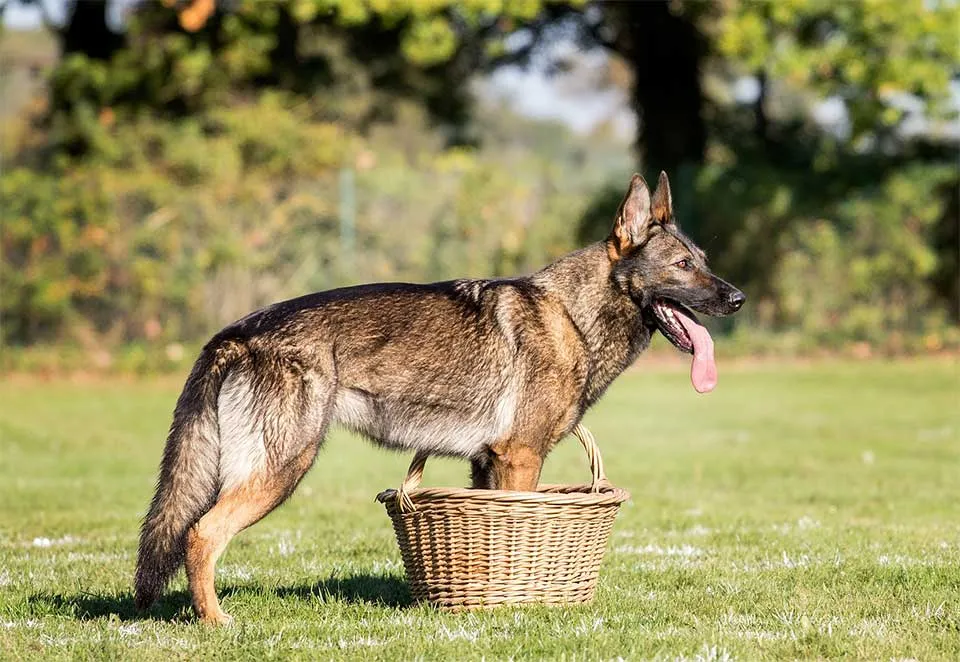Resource Guarding

Resource guarding occurs in many dogs for many different reasons, and it can be very worrying for owners who become fearful of their dog’s reaction should they approach him at the ‘wrong’ time. Although resource guarding is a natural canine behaviour, often learnt during puppyhood, where puppies are in constant competition for food and entertainment, it can cause serious problems within a dog/human household. What is acceptable within canine society is often considered ‘aggressive’ or ‘dangerous’ behaviour when brought into play in human society.
Dogs may guard many different items for reasons that are not apparent to their humans. The only common denominator in the selection of items to guard is that he feels they are valuable. He may guard food, toys, treats, his bed, furniture, food or water bowls, or even one or more of his owners. A dog who is confident within his family unit will not normally feel the need to protect his possessions. Resource guarding is often the sign of an insecure dog who constantly worries that people or other animals will steal his precious resources from him at any time. It can also be a form of controlling behaviour by some dogs which is a sign of poor leadership, in the dog’s eyes. He may keep his toys close, even carry them around with him, or sit with them between his paws where he can keep his eye on them. You may find that he eats his meals very quickly for fear that someone will steal his food away. A resource-guarding dog is often a very stressed and unhappy dog.
A dog who is resource guarding may growl, tense up or even bare his teeth if approached when in possession of a valued item. If these warning signs are ignored by the owner, a bite may occur as he believes this is his last resort.
It’s important to consider your dog’s history. If you had him as a puppy, you know his history and you may have unwittingly taught him to behave in this way by playing chase games when he stole things as a puppy. He has learnt that stealing things works for him. If he also learns that a growl will make you back off from taking the item from him, he will continue to use that as it enables him to keep the stolen item.
If your dog is from a rescue or was maybe a stray, then you should consider that this dog may have had to fight for survival when alone on the streets. This dog will need time and patience and your help to grow in confidence and trust. Take it steady.
If your dog guards food or his food bowl, then it is a good idea to ensure that there is no opportunity for grazing from the bowl during the day. Your dog needs to learn and feel confident that food comes from humans – in fact you need to be his only food source. Once your dog has eaten, and as long as he is out of sight, or it is safe to do so, lift the bowl and replace it when it is time for the next meal. Also, make sure that you feed a good quality food that your dog will eat straight away, and that will also meet his nutritional needs. Poor quality food that does not sustain your dog will only exacerbate the situation. If necessary, split his meals to four times per day so that your dog does not fear the lack of food.
For toys, it can be a good idea to move all toys out of reach. Put them away in a box and only get them out when you are ready to play. Teach drop if you can by exchanging a low-value toy for a high value toy, or exchange similar-value toys. Always praising when your dog gives up the toy in his mouth. If your dog tries to set up a ‘chase’ situation, ignore him as though the toy is of no value to you. This will take away the control of his game and stop him from doing it to get attention.
Don’t attempt to overpower your dog to retrieve items as these may result in you getting a bite and won’t help towards getting your dog to trust you. Remember, a guarding dog is an insecure dog. Trying to forcibly retrieve items will likely result in him also being afraid of you.
As we often say, calm, consistent leadership is the way to win your dog’s trust. Be patient but don’t ‘baby’ your dog. If you feel that you need help, call in a professional.
Bark Busters therapists have trained more than 1 Million dogs worldwide and are renowned authorities in addressing dog behaviour with all-natural, dog-friendly methods. The Bark Busters training is the only service of its kind that offers International guaranteed lifetime support. With hundreds of trainers around the world, Bark Busters continues its mission to enhance the human/canine relationship and to reduce the possibility of maltreatment, abandonment and euthanasia. Contact your local Bark Busters dog trainer to see how they can help.
This article is the copyright of Bark Busters® and is intended for information purposes only. Dog owners should fully research any problems that they may have with their dogs.
Recent Articles
- Easter Holidays - Keeping our dogs safe around food
- Horticultural Horrors for Hounds
- Understanding Dog Body Language
- Heatstroke in dogs - know the signs and what to do
- Preventing Separation Anxiety When Returning To Work
- Separation Anxiety
- Managing your time at home with your dog
- Top 10 Indoor Games for your Dog
- Working from home with your dog
- COVID-19 Social Distancing and Self Isolation
